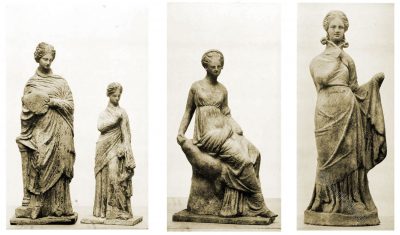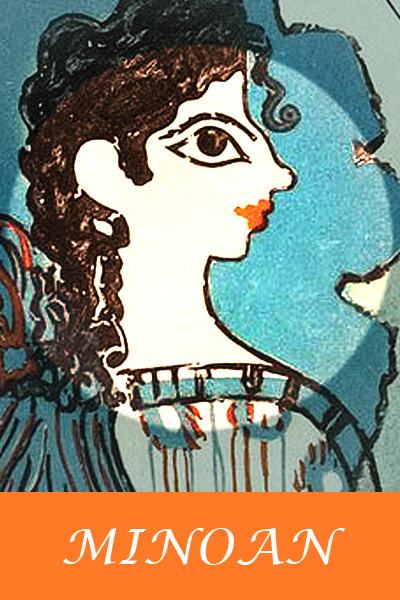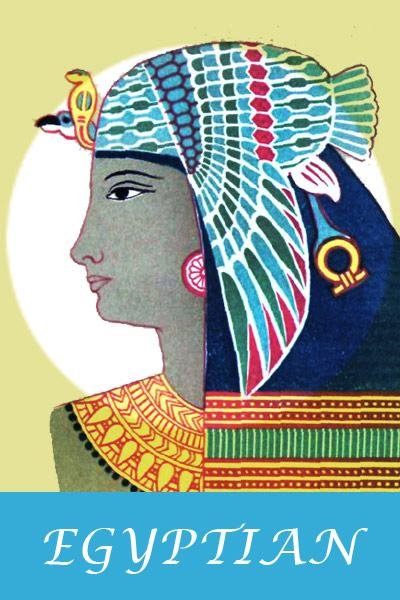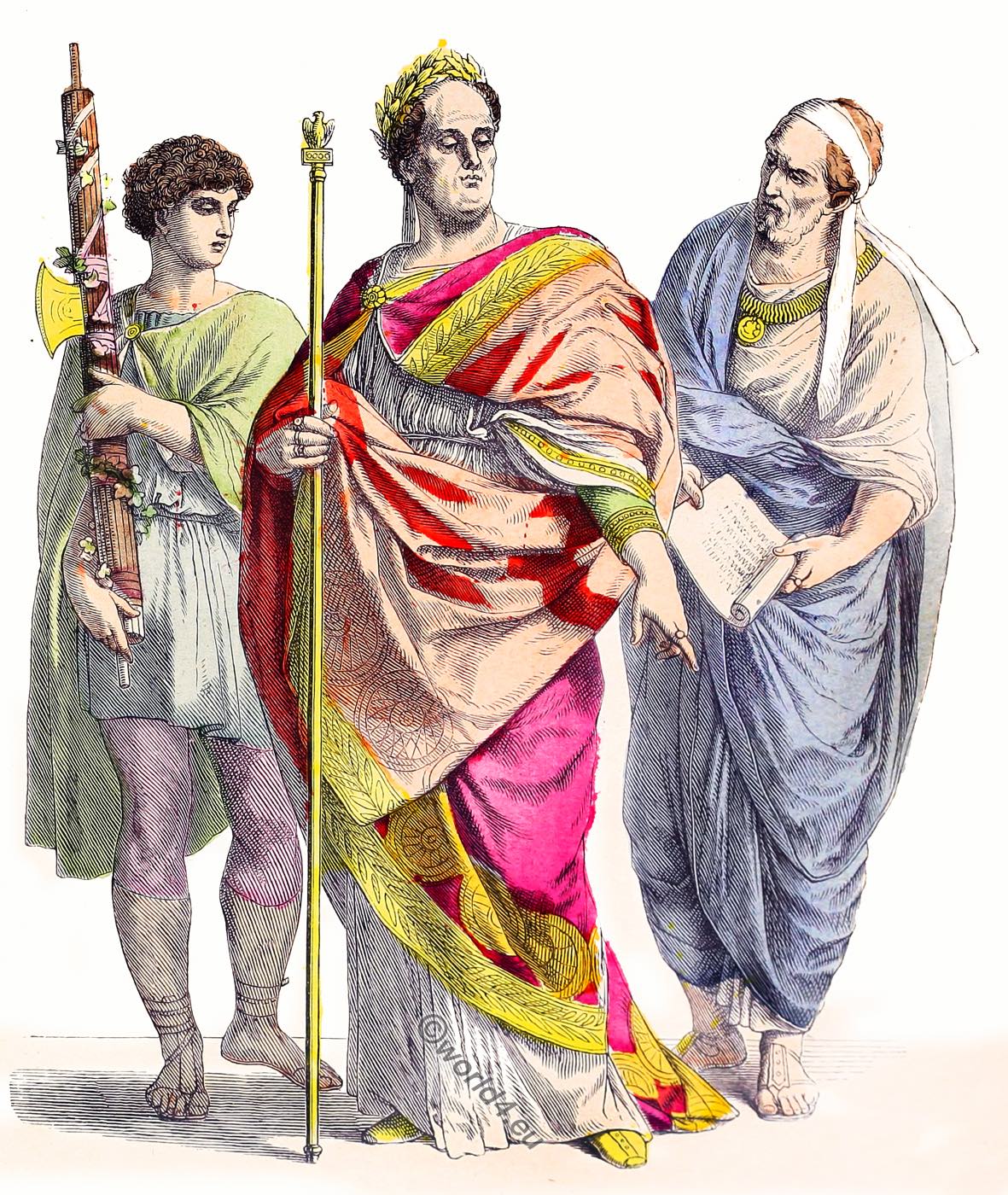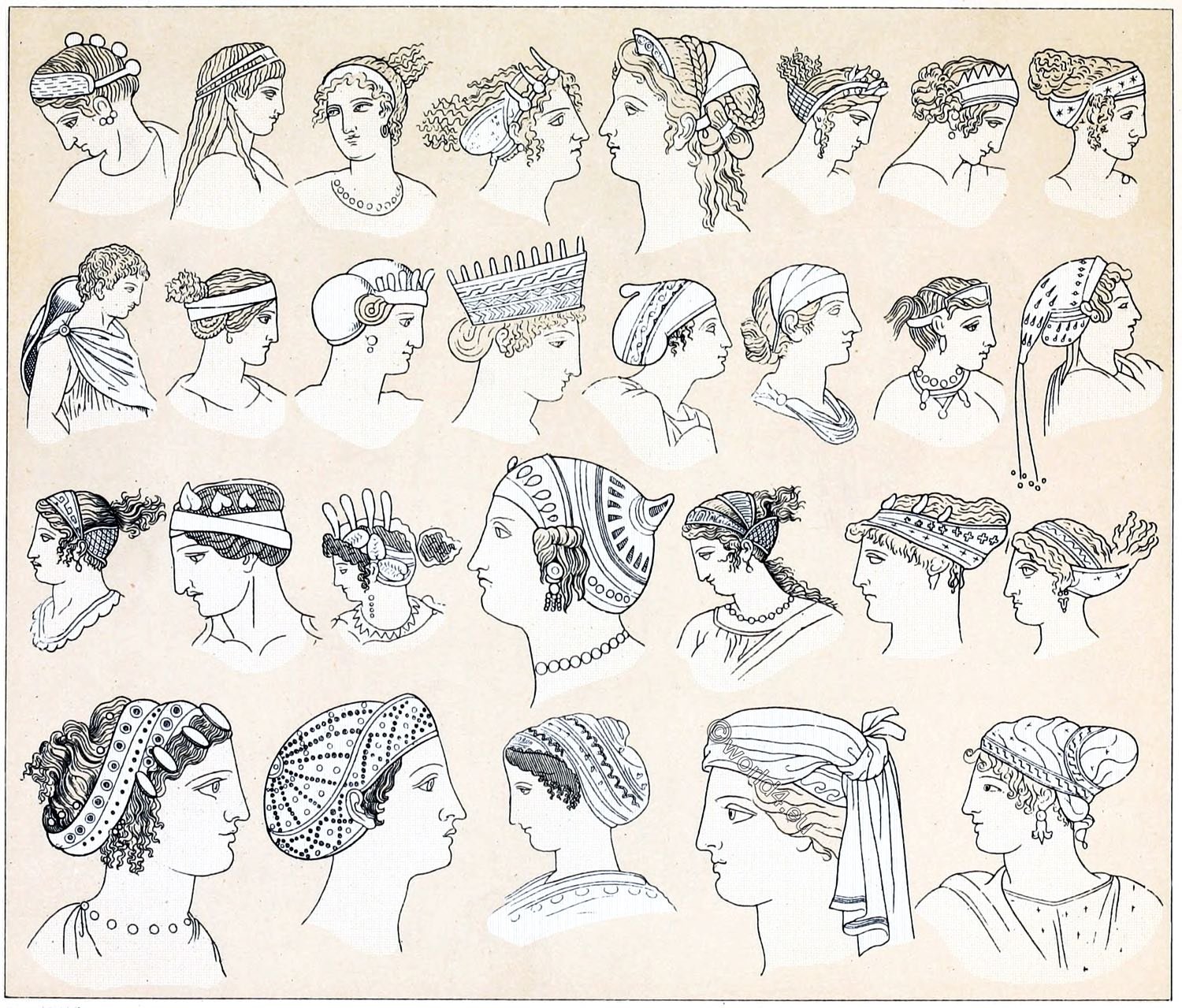Greek Hair, Headdresses.
IT is precisely in its earliest periods that the Grecian attire, whether of the head or of the body, exhibits in its arrangement the greatest degree of study, and if I may so call it, of foppishness.
In those Grecian basso-relieves and statues which either really are of very early workmanship, or which at least profess to imitate the style of work of the early ages (formerly mistaken for Etruscan), every lock of hair is divided into symmetrical curls or ringlets, and every fold of the garment into parallel plaits; and not only the internal evidence of those monuments themselves, but the concurring testimony of authors, shows that in those remote ages heated irons were employed both to curl the hair and beard, and to plait the drapery.
It was only in later times that the covering, as well of the head as of the body, was left to assume a more easy and uncontrolled flow.
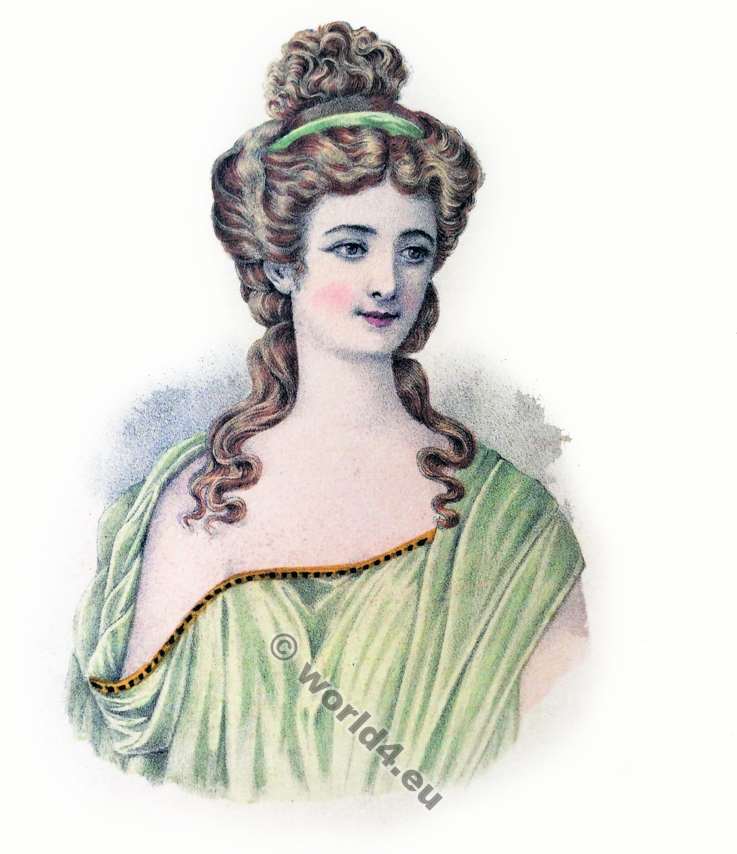

At first, as appears both from ancient sculpture and paintings, men and women alike wore their hair descending partly before and partly behind in a number of long separate locks, either of a flat and zig-zagged, or of a round and corkscrew shape.
A little later it became the fashion to collect the whole of the hair hanging down the back, by means of a riband, into a single broad bundle, and only to leave in front one, two, or three long narrow locks or tresses hanging down separately; and this queue was an ornament which Minerva, a maiden affecting old fashions and formality, never seems to have quitted; and which Bacchus, though not originally quite so formal, yet when on his return from amongst the philosophers of India he also chose to assume the beard and mien of a sage, thought proper to readopt.
Later still, this queue depending down the back was taken up; and doubled into a club; and the side locks only continued in front, as low down as the nipple. But these also gradually shrunk away into a greater number of smaller tufts or ringlets, hanging about the ears, and leaving the neck quite unconfined and bare. So neatly was the hair arranged in both sexes round the forehead, and in the males round the chin, as sometimes to resemble the cells of a beehive, or the meshes of wire-work.
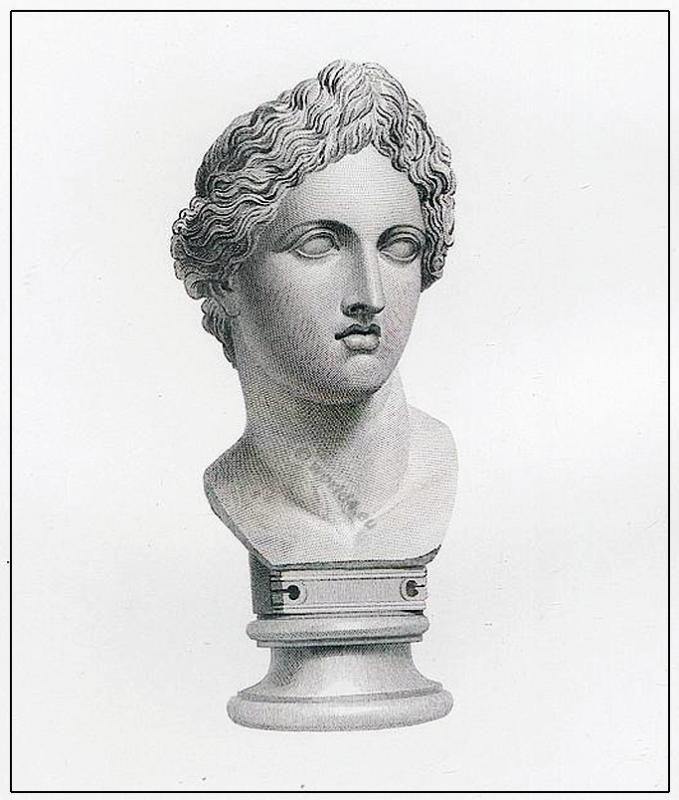

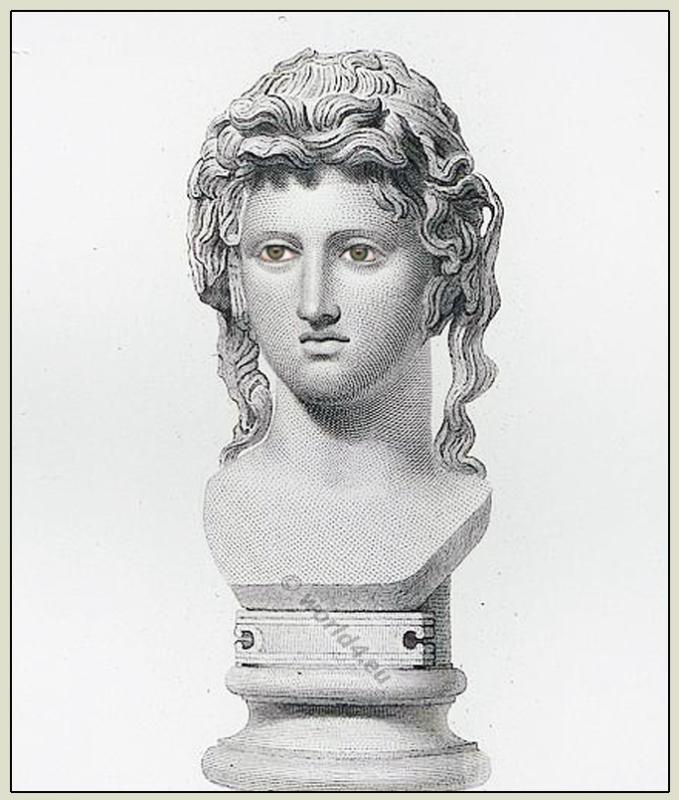
With regard to the attire of the body, the innermost article,- that garment which does not indeed appear always to have been worn, but which, whenever worn, was always next the skin,- seems to have been of a light creasy stuff, similar to the gauzes of which to this day the eastern nations make their shirts.
The peculiar texture of this stuff not admitting of broad folds or drapery, this under garment was in early times cut into shapes fitting the body and arms very closely, and joined round the neck, and down the sleeves, by substantial hems or stays of some stouter tissue. But even this part of the attire seems in later times to have been worn very wide and loose round the body, and often at the shoulders; where, as in the figures of Minerva and of the bearded Bacchus, the sleeves are gathered up in such a way as totally to lose their shape.
The outer garment assumes in the figures of the old style an infinite variety of shapes, but seems always to have been studiously plaited; so as to form a number of flat and parallel folds across its surface, a zig-zag line along its edge, and a sharp point at each of its angles.
Though the costume of the Greeks appears to have been more particularly of the sort just described, at the periods when the sieges of Troy and of Thebes were supposed to have taken place, and is in fact represented as such in the more ancient monuments relative to those events, the later works of art, nevertheless, even where they profess to represent personages belonging to those early ages, usually array them in the more unconfined habiliments of more recent times. In the male figures even of such primeval heroes as a Hercules, an Achilles, and a Theseus, we generally find the long formal ringlets of the heroic ages omitted for the short crops of the historic periods.
I shall now enter into a somewhat greater detail with regard to the different pieces of which was composed the Grecian attire.


